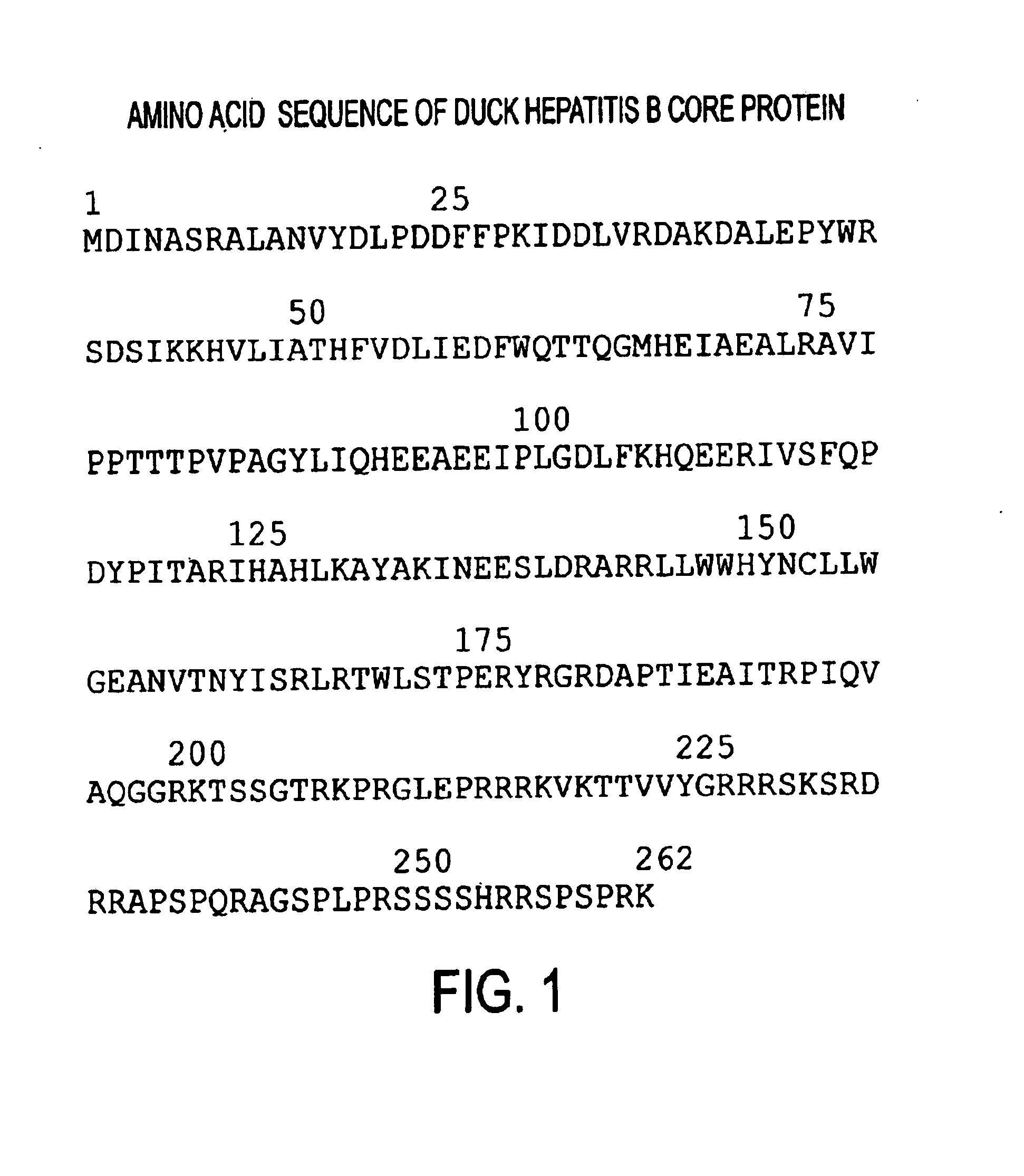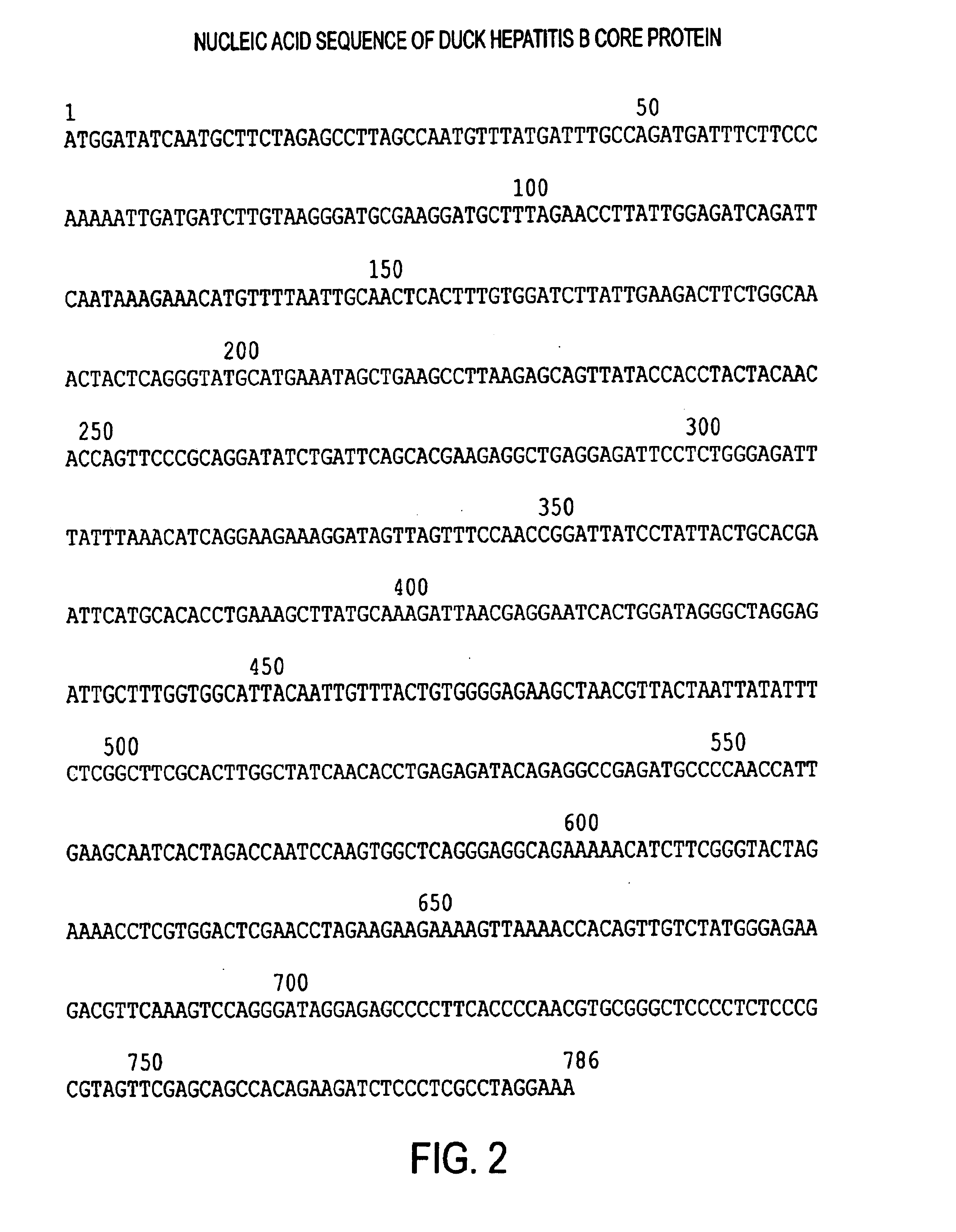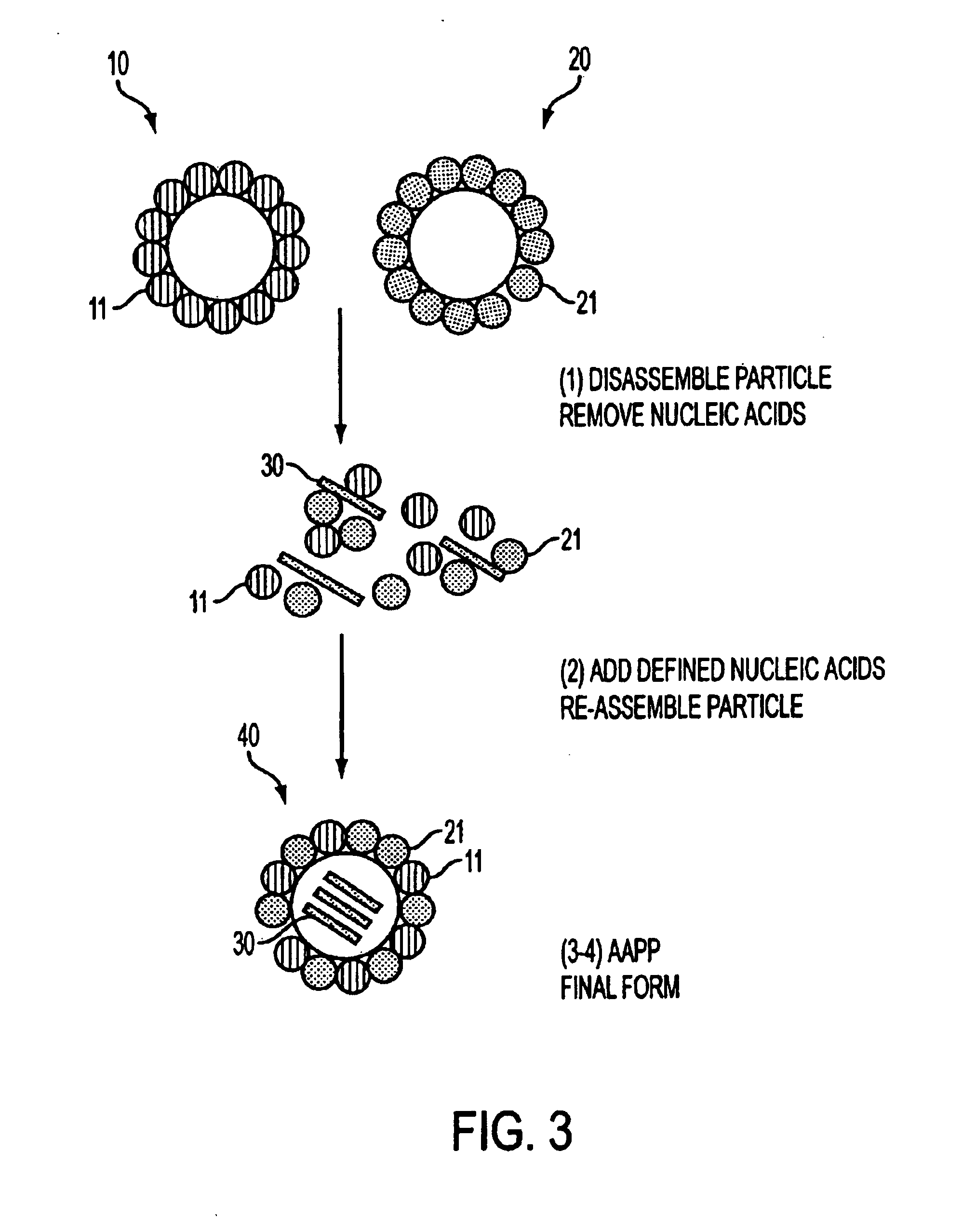Advanced antigen presentation platform
a technology of antigens and platform, applied in the field of vaccines, can solve the problems of major technological and conceptual inadequacies, inability to elicit a strong th1 immune response, and interfere with the induction of ctl
- Summary
- Abstract
- Description
- Claims
- Application Information
AI Technical Summary
Problems solved by technology
Method used
Image
Examples
example 1
Induction of Cytokines in Vitro
[0119]Experiments were conducted as described in Methods in order to determine which, if any, cytokines were induced by the exposure of J774A.1 macrophage cells to recombinant duck HBcAg and t-duck HBcAg. The results are given in FIG. 4. As can be seen, increased transcription of the TH1- type cytokines IL-1 α, IL-6 and IL-12 was induced by both duck HBcAg and t-duck HBcAg, indicating that the core protein is responsible for the induction of a TH1 cytokine profile.
example 2
Induction of IL-12 p70 Protein Production
[0120]Experiments were conducted in vitro to determine whether the addition of duck HBcAg and t-duck HBcAg to J774A.1 macrophage cells and the addition of duck HBcAg to mouse bone marrow-generated dendritic cells induced production of IL-12 p70 protein. Analysis of the quantity of IL-12 p70 in the cell culture media and cell extracts was carried out as described in Methods and the results are given in FIGS. 5A, 5B and 6. As can be seen, exposure to duck HBcAg and t-duck HBcAg for 72 hours increased the concentration of IL-12 in the culture medium (FIG. 5A) and in the cells themselves (FIG. 5B) of J774A.1 macrophage cells. Exposure of mouse bone marrow-generated dendritic cells from both BALB / C and B10 mice to duck HBcAg for 24 hours resulted in an increase in IL-12 in the culture medium (FIG. 6). This response is consistent with the induction of a TH1-type immune response.
example 3
Analysis of Cell Markers on J774A.1 Macrophage Cells
[0121]Experiments were conducted in vitro to determine whether the addition of duck HBcAg and t-duck HBcAg to J774A.1 macrophage cells could induce the presence of cell markers MIIC-I, MHC-Il, Ly-6A / E and B7-2. These cell surface markers are directly implicated in a TH1 type immune response. The presence of cell markers was determined by flow cytometry as described in Methods. The results are given in FIG. 6. As can be seen, the data showed that each type of cell surface antigen was upregulated after treatment with duck HBcAg for 18 hours, indicating that macrophages can be stimulated by duck HBcAg and t-duck HBcAg.
PUM
| Property | Measurement | Unit |
|---|---|---|
| Composition | aaaaa | aaaaa |
| Immunogenicity | aaaaa | aaaaa |
Abstract
Description
Claims
Application Information
 Login to View More
Login to View More - R&D
- Intellectual Property
- Life Sciences
- Materials
- Tech Scout
- Unparalleled Data Quality
- Higher Quality Content
- 60% Fewer Hallucinations
Browse by: Latest US Patents, China's latest patents, Technical Efficacy Thesaurus, Application Domain, Technology Topic, Popular Technical Reports.
© 2025 PatSnap. All rights reserved.Legal|Privacy policy|Modern Slavery Act Transparency Statement|Sitemap|About US| Contact US: help@patsnap.com



